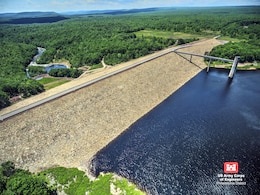Measure Prevents Unnecessary Feeding of Wild Deer to Prevent Spread of Disease and Other Negative Effects on Wildlife and Habitat
New York State Department of Environmental Conservation (DEC) Commissioner Basil Seggos announced the adoption of a regulation to reduce problems caused by wildlife feeding and establish strict procedures for the use of tick-control devices designed to treat deer. Prohibiting the feeding of wild deer and moose is a best management approach to reduce risks associated with communicable wildlife diseases like chronic wasting disease, minimize conflicts with deer, and protect wildlife habitat.
"Feeding deer and moose can artificially increase populations and change behavior, causing harm to people, wildlife, and the environment," Commissioner Seggos said. "These new requirements strike a necessary balance between preventing the negative effects of deer feeding while recognizing the increased public health threat posed by tick-borne diseases and make an exception to allow the use of certain devices designed to kill ticks on deer."
DEC first prohibited deer feeding in 2002 in response to the threat of Chronic Wasting Disease (CWD) because concentrating deer or moose at feeding sites increases the risk of disease transmission. However, there are many other negative impacts associated with deer feeding that necessitate a broader regulation.
Following a public comment period earlier this year, DEC adopted the new regulation to provide a clearer definition of what does and does not constitute illegal feeding of deer or moose. For example, the requirements provide exemptions for wildlife plantings, bona fide agricultural practices, livestock husbandry, and research and nuisance abatement actions permitted by DEC. It clarifies that incidental feeding such as the attraction of deer or moose to a birdfeeder will only be considered a violation if DEC has previously issued a written warning to the person responsible for the incidental feeding. This will allow nuisance situations to be appropriately addressed without limiting bird feeding in general.
To reduce the sale and marketing of products that are illegal to use and to protect consumers from being misled, the new regulation requires retail products packaged for sale as food or edible attractants for wild deer or moose to carry a label clearly stating that such use is illegal in New York.
The regulation also establishes procedures for the legal use of 4-PosterTM Tickicide and devices used to dispense it. 4-PosterTM Tickicide is a pesticide registered by the U.S. Environmental Protection Agency and DEC to kill ticks on deer. It is dispensed via four rollers, or "posts," attached to bait stations filled with corn. As deer eat the corn, the rollers deposit pesticide on their heads and necks.
In parts of New York with high tick-borne disease rates, there is considerable public interest in using these devices. The application procedures and permit issuance conditions specified in the new regulation are designed to allow such use while limiting negative impacts of deer feeding on the surrounding community and environment.
The full text of the new regulation is on the DEC website.




